

Transplanting in your garden is another way of getting something planted or moved to the right place. There are two ways to transplant; buy plants and transplant them or move plants from one place to another in your garden.
In spring, garden shops are stocked with annual flowers (pansies, petunias,), vegetable plants (tomatoes, lettuce), perennials (hostas, daylilies), and shrubs (hydrangeas, roses). Unlike seeds (which have to sprout) or cuttings (which may have to develop roots), transplants already have healthy root systems. These plants should not grow to maturity in the pots in which you buy them. You should move them either to the garden or into a larger pot.
Spring is also a great time to move plants already growing in your garden. You may be reorganizing a flower bed or making a new bed — transplanting now gives them a long season to grow and flourish.
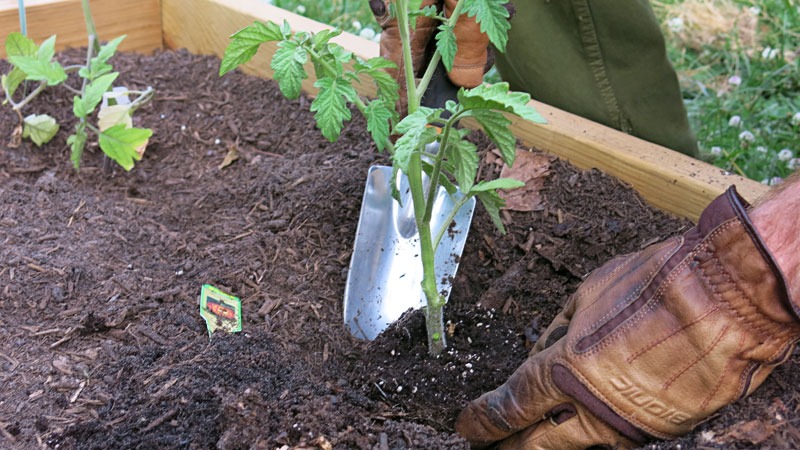
Whether you’re rearranging the garden or starting with plants from a garden shop, the basic steps of transplanting are the same.
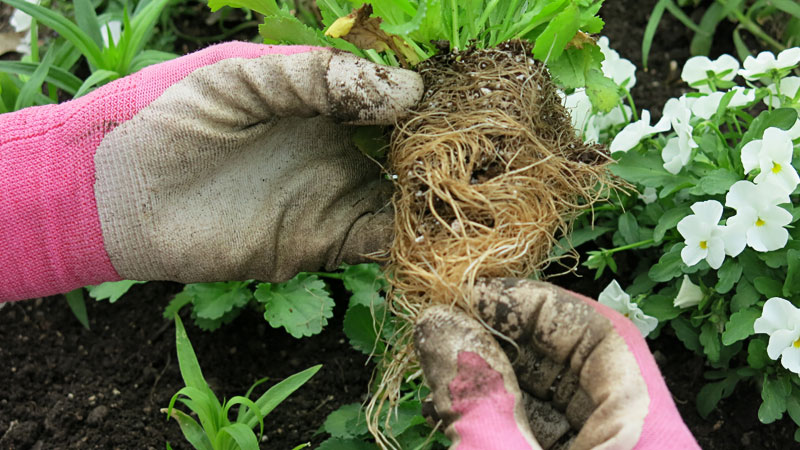
Annual flowers are a snap to transplant. When the weather is warm, small plants, like annual petunias, impatiens, or marigolds, are eager to grow. Annual flowers are often sold in plastic four- or six- packs. Give each plant space and they’ll begin to grow. The best time of year to transplant annual flowers is in spring after the last frost date in your area. The best time of day is early, before it gets hot. Once your garden hole or pot is ready, take the little plants out of the cell pack, loosen the roots gently and place them in their new home. Firm the soil around the plants and then water gently using the “garden” or “flower” setting on a watering nozzle. Although annual flowers only last one season, you’ll be able to enjoy their beauty soon after they are transplanted.
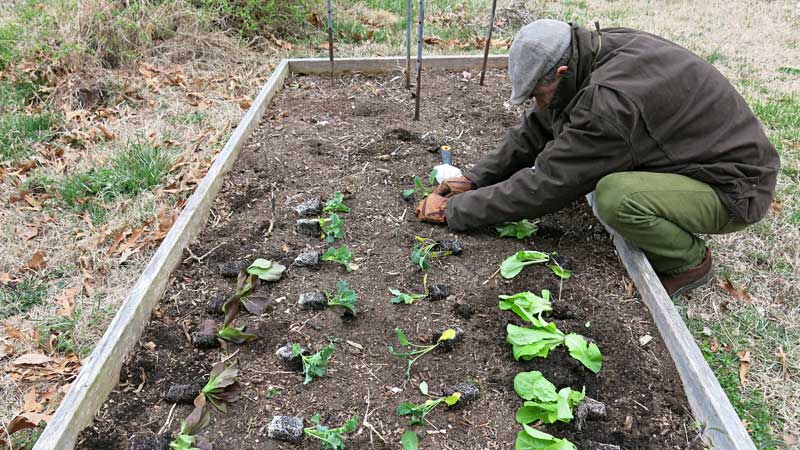
Lettuce and greens can be transplanted in early spring, when the days are still cool, as they won’t be harmed by a light frost. For other vegetables, wait until you are comfortable out in the garden in short sleeves. Then you can set out plants such as tomato, pepper and cucumber.
The best time to transplant lettuce and greens is in the morning or on a cloudy day. This protects the plants from direct sun while they make the quick transition from pot to the soil.
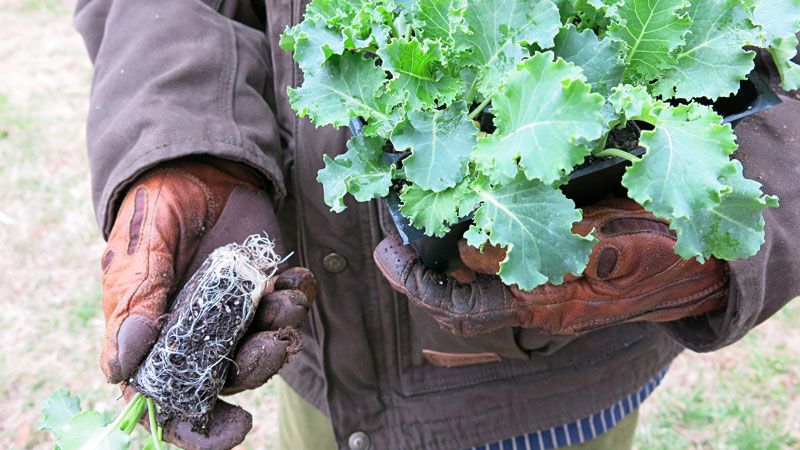
Remember to water well before transplanting. Once watered, take the veggies out of the cell packs and arrange them in the garden, firming the soil around each plant. Finish by watering with a Thumb Control Watering nozzle, using a gentle spray to soak the soil. Adjust the flow of water with your thumb to avoid damaging these tender plants with a blast of water.

Spring is also a good time to transplant perennial plants like daylilies. Best time of day to transplant is early in the morning, late in the afternoon or on a cloudy day. This will allow the plants to settle in out of direct sunlight.
The first step when transplanting daylilies from one spot to another is watering your plant well. The soil should be slightly moist, but not soggy. Next dig up your daylily and divide it. Take the division and place it in a prepared spot elsewhere in your garden such as new flower bed. Then firm the soil around it. Finish by watering again to help the transplant settle in. If you arrange a flower bed with several plants, water with a garden sprinkler. To help preserve moisture in the soil and discourage weeds, spread a 1-2 inch layer of compost or mulch around your plants.
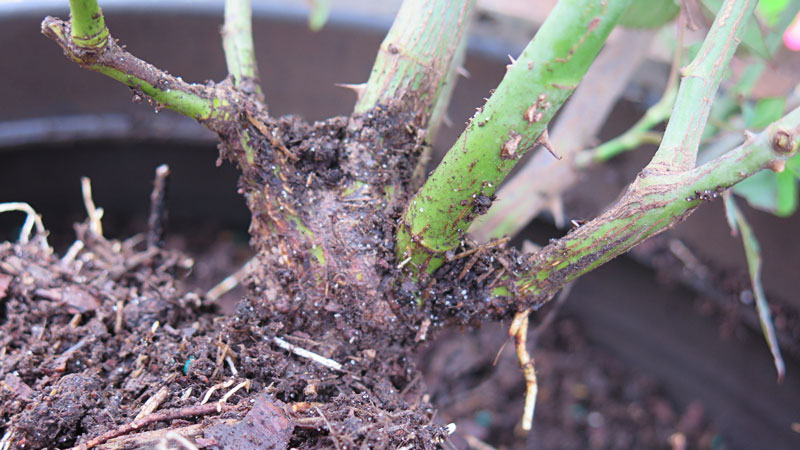
Transplant rose bushes just as you would perennials. Spring is a great time, but roses can be transplanted as soon as you can dig a hole in the ground.
Before transplanting, water the soil around your rose bush with the “garden” setting on your watering nozzle. The soil should be moist, but not soggy. Begin digging for the roots by working with a garden spade out from the main stem of the plant. Moving the plant with a good root ball is important.
Once the plant has been dug up, prepare a hole in the new spot. The hole should be a little larger, but no deeper, than the root ball of the plant. Next, set the bush in the soil with the crown of the plant (where the stem and the roots come together) at soil level. Firm the soil and water well. Keep an eye on watering while the rose bush adjusts to its new spot. If the weather is hot, water every few days. Otherwise, water once a week throughout the growing season.
For all your transplants, careful attention to watering will help them weather the transition to their new places in the garden. As the season progresses, your plants will get bigger and better. That’s the benefit of transplanting; your garden looks great right from the start and fills in quickly.
From the moment you pick it up, you’ll notice these nozzles are different. Designed with mobility in mind, they feature Gilmour’s innovative Swivel Connect. The swivel allows the nozzles to pivot without
Learn MoreWinter Gardening Tips to Tackle in the Off Season
As winter marches on, avid gardeners become more and more eager to get growing. While you may not be able to dig your spade into the soil just yet, there is plenty
Learn MoreDesign a Beautiful Drought Resistant Yard
Hot weather and drought-like conditions don’t mean a beautiful yard and garden is out of reach. Learn everything you need to know about drought tolerant landscaping, including the best type of plants,
Get the Dirt